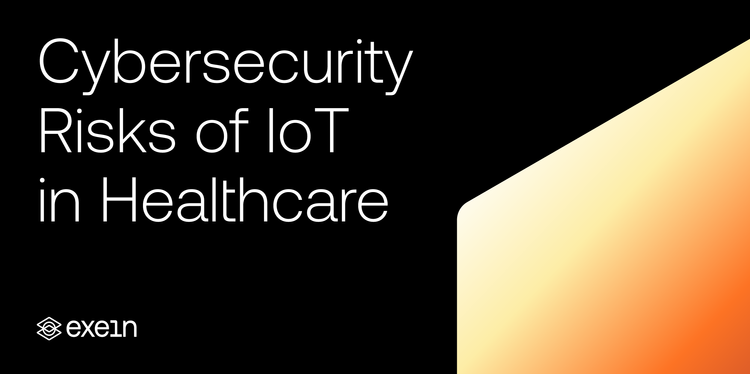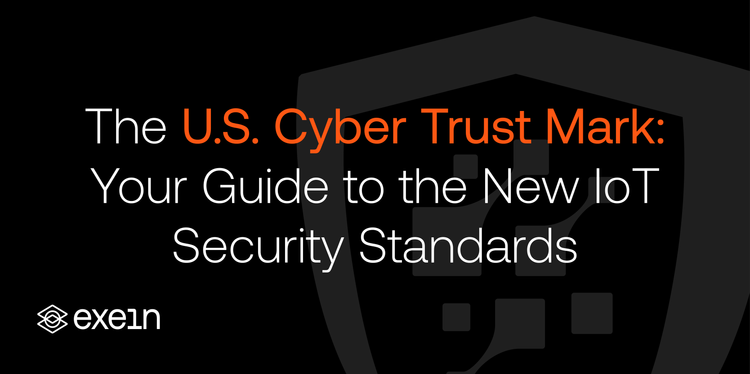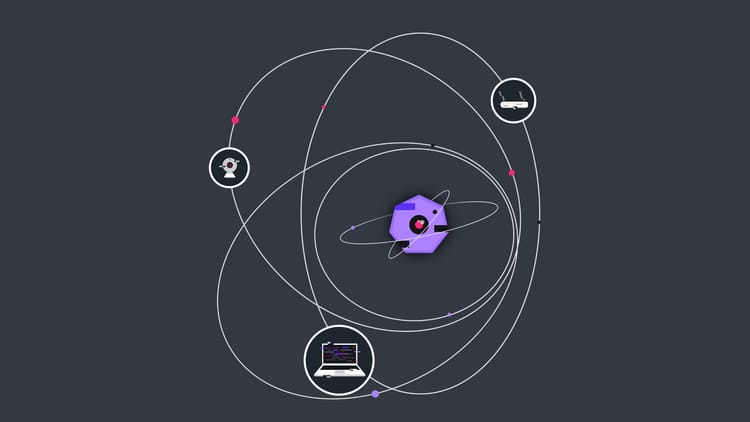Securing the Future: Cybersecurity Challenges in the IIoT 4.0

Examining the unique cybersecurity challenges associated with the IIoT 4.0, such as protecting critical infrastructure, ensuring data privacy, and mitigating potential cyber threats.
In the unfolding narrative of the digital era, the nuanced intricacies of cybersecurity are becoming ever more pronounced. Much as corporate hierarchies define the flow of power and control, so too does the burgeoning landscape of the Industrial Internet of Things (IIoT) 4.0, which delineates its own complex hierarchy of digital authority and command. This expansive web of connections casts a wide net over everything it encompasses, with each node, or player, holding a distinct and pivotal role, acting as gatekeepers or stewards of the digital domains they inhabit.
Navigating this digital tapestry, the IIoT 4.0 emerges as a beacon of the next generation of industrial innovation. This isn't merely a progression; it's a paradigm shift. Envision industries being reborn, where manual processes yield to the allure of automation and where decision-making is no longer solely dependent on human intuition but is enriched by the insights offered by intelligent systems. These advanced systems, capable of self-monitoring, adaptability, and autonomous actions, are heralding a new age of efficiency and productivity.
However, the very elements that make IIoT 4.0 a groundbreaking force also render it vulnerable. The vast interconnectedness, the seamless data flows, and the melding of physical and virtual landscapes mean that there are more points of potential failure. The digital vulnerabilities are no longer just about data theft or financial loss; they have ramifications that echo in the physical world. An unauthorized access or a slight manipulation in this environment could have cascading effects, disrupting not just digital operations but also real-world processes. The cybersecurity challenges, thus, are not just about keeping malicious entities out but ensuring the integrity, reliability, and resilience of the entire system.
Critical Infrastructure at Risk
Picture a vast industrial complex, humming with activity, its pulse synchronized by a myriad of interconnected devices. At its helm stands a manufacturing leader, much akin to a maestro conducting an orchestra. Every beat, every rhythm, is dictated by their decisions, reminiscent of an engineering virtuoso whose choices set the cadence for product releases.
A cyber incursion can throw this symphony into disarray, granting a sinister advantage to adversaries eager to introduce chaos into this orchestrated dance.
In this age of technological prowess, the critical infrastructures that form the very backbone of our modern societies are no longer isolated entities. They are deeply integrated with digital networks, blurring the lines between the tangible and the virtual. Think of these infrastructures as the lifeblood of nations, channelling vital resources, goods, and services across sectors such as energy, transportation, and manufacturing. A single glitch, a momentary lapse in security, can ripple through these systems, leading to far-reaching consequences.
Such an interruption does not merely translate to a dent in the profit charts. It reaches beyond the confines of financial repercussions, touching the very core of a nation's security and stability. The implications can be wide-ranging, from leaving cities in darkness due to a power grid failure to halting crucial transportation links. Given these stakes, the onus placed on the guardians of cybersecurity is immense. They find themselves in a relentless game of chess, striving to outmaneuver and outthink adversaries that are constantly evolving, forever seeking to breach the fortifications. The challenge is not just to defend but to preemptively strategize, ensuring that the safeguards in place are always a step ahead of looming threats.
Data Privacy – The New Currency
Data emerges as the silent protagonist, much like the sales leader working tirelessly behind the scenes to keep the gears of a business machine moving. Just as this leader navigates the turbulent waters of client demands, churning out results with grace under pressure, data threads its way through the veins of IIoT, carrying information, enabling functions, and shaping outcomes.
Data isn't merely a residue of digital operations. It embodies the essence of IIoT 4.0, capturing the nuances of every transaction, every operation, and every decision. This continuous stream of information is rich with insights, from the intricacies of proprietary production techniques to the personal specifics of the workforce. Each byte is a treasure trove, telling tales of efficiencies, innovations, and aspirations.
Allowing unauthorized access or letting sensitive information slip through the cracks isn't merely a technological misstep; it's a breach of trust.
Yet, in the rush to harness the potential of IIoT 4.0, the sanctity of data can sometimes be pushed into the background, somewhat reminiscent of how pivotal business leaders can occasionally be taken for granted amidst flashier projects. However, overlooking the need to safeguard this digital gold can have profound implications. Just as the efforts and expertise of a business leader need acknowledgment and protection, the privacy of data warrants uncompromising vigilance.
Allowing unauthorized access or letting sensitive information slip through the cracks isn't merely a technological misstep; it's a breach of trust. It puts at stake not just the integrity of the operations but the very reputation of the organizations involved. As teams and technologies come together in the shared mission of IIoT 4.0, a parallel commitment must be made: to treat data with the reverence it deserves, to shield it from prying eyes and potential breaches, and to enshrine its privacy as a cornerstone of operations. In the end, just as mutual respect strengthens bonds between colleagues, so does a dedicated focus on data privacy solidify the foundation of IIoT 4.0.
Mitigating the Ever-Present Cyber Threat
Cyber vulnerabilities are akin to open doors in a vast mansion, each inviting malevolent entities to sneak in. Picture an overburdened IT department, stretched thin, always on the move, tirelessly attending to an exponentially growing corporate entity. They often find themselves catching up, trying to mend a system even as newer challenges emerge, a step behind the constantly advancing threats. Such is the state of cybersecurity in the age of IIoT 4.0, where professionals often find themselves navigating a maze of risks, sometimes just barely keeping the onslaught at bay.
However, likening this situation to an underdog in a challenging scenario isn't entirely accurate. Yes, the challenges are daunting, but there's a wellspring of resilience to tap into. Think of an individual in a one-sided relationship, seemingly overshadowed, but brimming with the latent power to change the status quo. This is where the narrative shifts for industries operating within the framework of IIoT 4.0.
By leaning into proactive measures, industries can indeed flip the script.
The deployment of state-of-the-art threat detection systems acts as the watchful eyes, constantly scanning for potential anomalies and shutting them down before they mature into full-blown threats. Scheduled security audits become the routine health checks, assessing the robustness of defenses, identifying weak spots, and suggesting fortifications. But perhaps most vital in this pursuit is the cultivation of a pervasive cybersecurity culture. This is the equivalent of fostering mutual respect and understanding in interpersonal relationships, where every individual, irrespective of their role, becomes a sentinel, vigilant to potential threats and aligned in the mission of safeguarding the digital sanctum.
In effect, while the cyber challenges of IIoT 4.0 might seem herculean, industries are far from powerless. With the right investments, both in technology and in nurturing an aware workforce, the tide can indeed be turned, positioning industries not as mere reactors but as formidable guardians of their digital domains.
In Conclusion
The vast expanse of IIoT 4.0, with its intricate interplay of interconnected devices and systems, presents a world of opportunities and innovations. Yet, as with any significant technological leap, it comes with its fair share of vulnerabilities. Navigating this digital terrain is akin to walking through a maze of office politics – full of potential pitfalls, unforeseen challenges, and moments of truth. But as any seasoned professional knows, understanding the rules of the game, being proactive, and employing strategic measures can make all the difference.
Embedded security is one such strategic measure that's crucial in this context.
Imagine a scenario where every employee in an office environment instinctively acts as a guardian of confidential information, securing data and being alert to any discrepancies. That's what embedded security brings to IIoT 4.0. By integrating security at the very core of devices, right from the design and manufacturing phases, we create an inherent line of defense against potential cyber threats. This is not just a superficial layer of protection but a deep-rooted security stance that's integral to the device's functioning.
Much like how trust and integrity form the bedrock of office politics, embedded security serves as the foundational element ensuring the integrity, confidentiality, and availability of information in the IIoT ecosystem. It is a proactive approach, anticipating threats rather than merely reacting to them.
As devices communicate, process, and act upon vast amounts of data, having embedded security ensures that each node in the network is a fortified bastion, resilient against external intrusions and internal malfunctions.
In essence, to truly harness the transformative power of IIoT 4.0, industries must see beyond the immediate allure of interconnectedness and automation. They must invest in and prioritize embedded security. Just as nuanced negotiations and a deep understanding of dynamics can lead to success in office politics, a thorough, embedded security strategy can ensure that the IIoT landscape is not only promising but also protected and robust. Only with such a holistic approach can industries unlock the full spectrum of possibilities that IIoT 4.0 offers, cultivating a digital environment where innovation flourishes, unhampered by security concerns.




